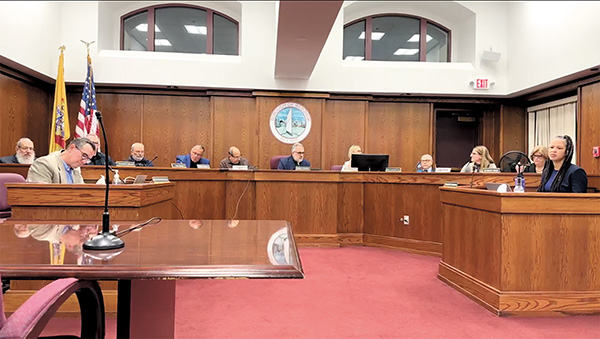
By Sunayana Prabhu
RED BANK – The borough’s first new Master Plan since 1995 was unanimously approved and adopted by the planning board Feb. 6.
Dan Mancuso, the Red Bank Planning Board chairman, addressed concerns from board members and residents about prioritizing the recommendations for land use in the Master Plan that will determine the future landscape of the town.
The borough’s first full Master Plan was updated after almost 28 years by New York-based consultant Susan Favate and her team at BFJ Planning. According to the final draft, the Master Plan is to “serve as a roadmap to guide planning for the future of the borough.”
The document will provide elected officials and decision-makers with a reference guide when addressing land use, zoning and capital investment.
A debate ensued when residents and board members asked that the final Master Plan include a priority scale or a ranking on how land use is recommended in order to aid council decisions in the future.
“It’s really just an idea book,” Mancuso said, explaining that the Master Plan is a document to be used as a reference, a resource for federal agencies, the mayor and council, for future developers and for grant opportunities, among other applications.
“My worry with prioritizing anything,” Mancuso elaborated, is that any kind of future development depends on the town’s economics and opportunities available at that given time. “I couldn’t tell you what’s going to happen. Whether there’s train station development or grant opportunity for better bicycle paths or pedestrian safety or affordable housing. None of it is necessarily more important at any given time than something else because we don’t know what opportunity will present itself at that time,” and therefore ranking specific projects is not appropriate, Mancuso said.
“I think you have a very constrained view of what a Master Plan is,” said Lou DiMento, a planning board member.
Board attorney Michael Leckstein, in defense of Mancuso, said that “there’s nothing of priority in this. This is not a shopping list.”
Resident Suzanne Viscomi raised concerns about the borough’s West Side, the need for affordable housing and a dearth of parking in the neighborhood.
“You so perfectly summarize the problem with a 1.9-square-mile town where you want more affordable housing, but you want great quality of life and you want a place to park your car,” he said. “That is a big dilemma.”
Resident Bruce Whitaker expressed his disappointment that the Master Plan doesn’t shape the borough’s development. “If the Master Plan doesn’t drive the evolution of this town and development itself, what does?” he asked the board.
“Economics,” Leckstein replied.
Leckstein explained that the Master Plan looks at the town, makes adjustments and makes certain goals. It doesn’t drive any development in town but if a developer comes in, and “sees an opportunity in a particular zone” then a Master Plan aids in future action.
Borough council president and planning board member Michael Ballard said the 166-page document has many suggestions but “things get done that we can get done within the constraints of how we raise money. That’s where grants come in, that’s where private-public partnerships come in.”
During the meeting, William Poku, president of the Greater Red Bank chapter of the NAACP, brought up what he called an “existential problem concerning people of color.”
Citing a “24% decrease in black population” and significant decrease in Latino population from 2010 to 2019, Poku said, “Whatever is happening that’s causing people of color not to be able to live in Red Bank has to be addressed.”
He pointed out to the board that the “Master Plan, according to the Constitution, will have to have an affirmative effort to correct the problem,” based on Mount Laurel specifications. The 1975 ruling requires that municipalities use their zoning powers to provide opportunities for development of affordable housing within their boundaries. The historic decision prohibits towns from enacting land-use rules that make it impossible for affordable housing to be built.
“The question is, are we going to do anything to stop the bleeding?” Poku said.
Mancuso said the planning board in the town “very much supports affordable housing,” agreeing that the board is “bound legally” to the Mount Laurel ruling and has mentioned in the Master Plan how important affordable housing is. “Any development that comes before this board that has a requirement based on the Mount Laurel case law will absolutely be adhered to,” Mancuso said.
Favate, the planning consultant, said “housing affordability is a big piece” in the “reversal of the Great Migration that’s sort of happening now.” But, she said, it “is not unique to Red Bank. It’s something we’re seeing throughout the Northeast.”
“There’s no one answer,” she said, but the Master Plan has included a lot of strategies to address gentrification and the obligation to try to make housing affordable for more people.
A planning board subcommittee steered the project to update the Master Plan that started in January 2022. After several public workshops and inputs from stakeholders both in-person and virtually, the extensive plan was drafted and is available on the borough’s website for review.
The article originally appeared in the February 9 – 15, 2023 print edition of The Two River Times.














